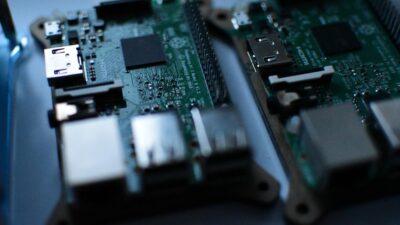In recent years, edge computing has rapidly emerged as a transformative paradigm in the IT landscape. By processing data closer to the source—at the edge of the network—this technology minimizes latency, enhances data security, and optimizes bandwidth usage. As industries worldwide embrace this shift, innovative applications of edge computing are reshaping how we interact with technology in real time. This article explores some of the most compelling real-world applications driving innovation across various sectors.
1. Smart Cities
As urbanization accelerates, cities are increasingly leveraging edge computing to enhance infrastructure and improve citizens’ quality of life. Smart traffic management systems utilize real-time data from sensors installed at intersections and along roads. By processing this data on-site, cities can optimize traffic flow, reduce congestion, and decrease emissions. Additionally, public safety initiatives employ edge computing for real-time surveillance and response systems, enabling rapid analysis of CCTV footage for quicker decision-making.
2. Healthcare
The healthcare sector is reaping the benefits of edge computing to deliver timely medical care. Wearable health devices, such as smartwatches and fitness trackers, gather vast amounts of data on users’ vitals. By processing this information locally, these devices can provide immediate feedback, alerting users to potential health risks without the need for continuous internet connectivity. Hospitals are also adopting edge solutions to analyze real-time patient data, which can enhance decision-making, streamline operations, and ultimately lead to better patient outcomes.
3. Manufacturing
In the manufacturing industry, edge computing is revolutionizing operational efficiency through the implementation of smart factories. IoT devices installed on machinery collect and analyze data on performance and condition in real time. By processing this data at the edge, manufacturers can predict equipment failures before they occur, implementing preventive maintenance and reducing downtime. This capability not only optimizes production processes but also drives cost savings and enhances product quality.
4. Retail
The retail sector is harnessing edge computing to enhance the consumer shopping experience. In-store analytics platforms employ edge devices to collect data on customer behavior and preferences. This immediate analysis allows retailers to tailor promotions and improve inventory management, ultimately driving sales and customer satisfaction. Moreover, edge computing supports contactless payment systems and enables personalized marketing through interactive displays, creating a more engaging shopping environment.
5. Autonomous Vehicles
The development of autonomous vehicles is heavily reliant on edge computing. These vehicles generate and process a staggering amount of data from sensors and cameras in real time, necessitating low latency communication to ensure safe navigation. By processing data on the vehicle itself, algorithms can instantly react to road conditions, pedestrian movements, and traffic signals. This edge computing capability enhances the vehicle’s decision-making processes, improving safety and efficiency.
6. Agriculture
Edge computing is also making waves in the agricultural sector through precision farming. Sensors deployed in fields collect data on soil conditions, crop health, and weather patterns. By analyzing this data locally, farmers can make informed decisions about irrigation, fertilization, and pest control. This targeted approach not only increases yield but also conserves resources and minimizes environmental impact, driving sustainable agricultural practices.
Conclusion
Edge computing is not just a technological trend; it is a transformative force that is reshaping various industries and driving innovation. From smart cities and healthcare to manufacturing and agriculture, the applications of edge computing are extensive and impactful. As organizations continue to embrace this paradigm, we can expect further advancements that will enhance efficiency, improve consumer experiences, and foster sustainable practices. The edge is not a distant frontier; it is here and now, actively redefining how we interact with and benefit from technology in our daily lives.



